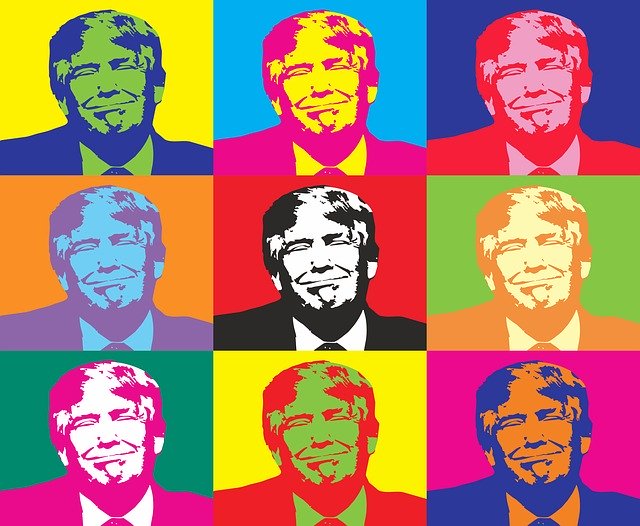Trump’s COVID-19 stimulus plan needs to swap checks for digital dollars
President Trump’s plan to issue checks to stimulate the US economy amidst the COVID-19 downturn will see almost every American receive a $1200 pay-out. But how many Americans will fail to cash or even receive those checks? And how can the government ensure the money will be put back into the nation’s economy? A central bank-issued digital dollar could make future crisis stimulus measures significantly more effective, argues R3 CEO David E. Rutter.

The potential for a CBDC to make such disbursements more efficient and effective is multi-faceted.
In the midst of a crisis as overwhelming as the COVID-19 pandemic, it can be hard to think about anything but the immediate future – and rightly so. Our government’s attention must be focused squarely on containing the disease, saving lives and limiting the economic, social and cultural fallout as much as possible.
Yet times of crisis often spark the most creative thinking – or indeed fast-track innovations in technology that can better equip us to handle similar events in the future. Today, technology permeates almost every element of our lives, so it’s only natural we look to it to improve our future.
In the midst of the financial crisis in 2008, Satoshi Nakamoto released the famous paper, ‘Bitcoin: A Peer-to-Peer Electronic Cash System’ as a reaction to the problems inherent with centralised financial institutions. The first event on the Bitcoin blockchain occurred on January 3 2009, offering a glimpse at what an alternative future for money could look like.
Today, we find ourselves on the edge of another major global economic downturn, albeit for very different reasons. In our industry, the initial Bitcoin concept has evolved almost beyond recognition into an ecosystem of players developing blockchain-based solutions for a myriad of different purposes. One of the most promising developments to emerge is the concept of a central bank digital currency, or CBDC.
Countries as diverse as Thailand, China, Canada, Singapore, Russia, and the UK are actively exploring the potential of creating digital central bank money for wholesale and retail use. And in the US last month, Maxine Waters, Chair of the House Committee on Financial Services, published a draft bill for COVID-19 stimulus, which included the introduction of a digital dollar. A CBDC could provide a critical lifeline in a time of crisis such as that in which the US, and indeed the world, currently finds itself.
President Trump’s plan to issue checks is not the first of its kind in recent US history. George W. Bush experimented with similar approaches in both 2001 and, most recently, 2008 – at the height of the financial crisis. A stimulus rebate check was mailed out to 130 million taxpayers in 2008, with varying levels of success.
Advocates of Bush’s bill said that it was significant enough to impact the $14 trillion economy, but by the time the checks arrived in taxpayers’ hands, it was too late to prevent recession. In addition, many recipients didn’t put the money back into the economy and indeed many didn’t receive or cash them.
A 2008 survey found that only 20% of those who received checks spent them, while another 32% put the money into savings and many others used the checks to pay off debt. President Trump’s bill risks falling victim to a similar fate.
But what if the Fed had already rolled out a digital version of the US dollar on a blockchain-based network, and every American citizen and business was connected to this network via their own digital wallet? The execution of Trump’s stimulus plan would look very different.
The potential for a CBDC to make such disbursements more efficient and effective is multi-faceted. For the government, the cost of printing and mailing millions of checks is instantly removed. So is the strain on the US Postal Service. And it can be certain that the recipient will have the funds available to them as soon as they are issued. But more importantly, a CBDC can utilise smart contract technology on the blockchain to allow the money being sent to citizens to be ‘programmed’ to perform its desired function.

On a more basic level, however, a CBDC is simply more suited to the digitally native world in which we live today.
This means that the government could set guidelines about how and where the money is spent, for example in a grocery store or pharmacy that would provide stimulus to the economy. And the smart contract could set a window of time within which the money must be spent before it becomes invalid, helping provide the required rapid economic boost.
For American citizens, the benefits would also be considerable. You can be certain that you will receive the promised funds, perhaps via a cell phone or another device and without any risk of a check getting lost in the mail – an even more important consideration for some of the poorest members of society who don’t have a permanent mailing address. And in times of a medical crisis such as that which we face now, citizens do not need to leave their homes to cash a check, opening themselves or others to the risk of infection. In addition, removing checks from the equation prevents citizens being tempted to cash them at less scrupulous institutions such as casinos or those that offer payday loans.
On a more basic level, however, a CBDC is simply more suited to the digitally native world in which we live today. Blockchain can provide the basis for an infrastructure that provides a direct line between the US Treasury, the Fed and American citizens – and the instantaneity, certainty and transparency it provides could be critical to the success of future crisis stimulus plans.
We face a period of unprecedented uncertainty and hardship as a result of the global COVID-19 pandemic, and a conversation about the merits of blockchain and digital currencies can feel understandably trivial. But it is important every industry plays its role in ensuring we as a society are better equipped to handle a crisis of this scale in the future – and a digital dollar could be the US technology industry’s silver bullet for economic stimulus efforts.












































I agree it should be easy to send and receive money p2p just like we send and receive our email.